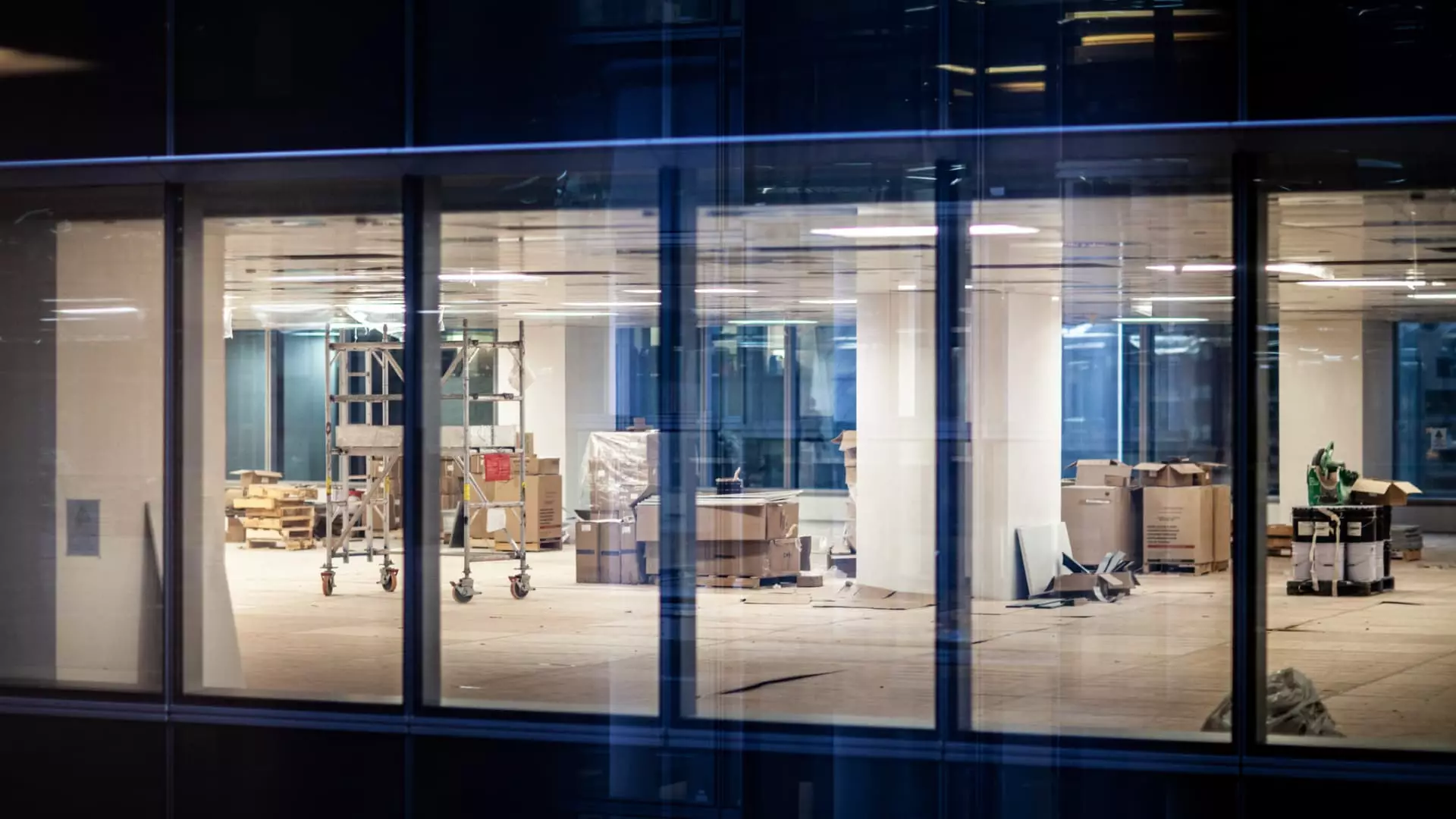The recent plunge in office space demand signals more than just a cyclical downturn; it exposes the deeper tremors unsettling the backbone of the urban economic fabric. While some may dismiss this as a temporary pause, the patterns emerging suggest a fundamental reevaluation of what the office market and urban centers—once symbols of growth—stand for in the 21st century. In fact, what we are witnessing might be a turning point, where economic policy, geopolitical tensions, and technological shifts converge to redefine urban real estate in ways that threaten long-term stability.
The stark decline—measured by a 23% drop in new tenant searches and a 26% decrease in sought-after square footage—reflects far more than a minor slowdown. It signals a loss of confidence that could have catastrophic ripple effects, especially given that this contraction sharply mirrors the pressures felt during prior financial upheavals like the bank failures earlier this year. The fact that such a significant retreat resembles past crises is not coincidental; it suggests that the conditions fostering this decline are systemic and durable.
The Role of Tariffs and Geopolitical Instability
One cannot ignore the elephant in the room: tariffs. These trade barriers, often viewed as mere economic tools, are increasingly wielded as instruments of geopolitical leverage that have palpable impacts on investment and development. The recent reinstatement and escalation of tariffs by the Trump administration—ailing to quell fears, but instead amplifying them—are undermining investor confidence. As tariffs directly influence capital flow, they serve to restrain new construction and accelerate the deconstruction of existing spaces, paradoxically shrinking the very fabric of our urban areas.
This policy environment fosters a climate of uncertainty that discourages long-term commitments. The risk is no longer theoretical; it manifests in the real estate decisions of today’s investors, which are growing more cautious, if not outright hesitant. This hesitancy is further intensified by global instabilities—conflicts in the Middle East, diplomatic tensions, and unpredictable policy shifts make a potentially explosive cocktail threatening landscape stability.
Economic and Political Tensions Feed a Growing Crisis
The broader economic landscape is marred by what appears to be a fragile recovery—so much so that the rebound in the stock market feels superficial and disconnected from the real estate downturn. The recent slowdown in leasing activity after six consecutive quarters of growth underscores a significant shift: the market’s resilience is waning as economic policies become increasingly unpredictable. The political arena amplifies this instability with unresolved debates over fiscal strategies and the future of tariffs.
Furthermore, the possibility of more square footage being removed from the market than added through new construction for the first time in decades is a stark warning of a structural shift. Urban centers, once burgeoning hubs for innovation and economic activity, might be facing a period of contraction—a reality that challenges their very relevance and sustainability.
Is Remote Work and Technological Disruption Accelerating the Decline?
While tariffs and geopolitics play major roles, the most insidious factor may be technological transformation—specifically, the rise of remote work. Companies are increasingly reevaluating their need for sprawling office spaces, favoring flexible arrangements or entirely virtual workforces. This trend erodes the very foundation of demand that built entire city economies around office leasing, commercial real estate, and urban development.
The combined weight of policy-induced economic uncertainty and the technological revolution suggests a perfect storm for the traditional office market. Urban areas, historically viewed as resilient engines of growth, are now at risk of long-term decline if this convergence continues unchecked. Policymakers and investors who cling to outdated models of urban prosperity risk neglecting the signals of their own obsolescence.
The current downturn demands a profound reassessment of how we approach urban development and economic resilience. Blind optimism or dependency on old growth paradigms will only deepen the crisis. Instead, policymakers must recognize that adaptability and sustainability are paramount in reshaping our cities. Balancing the immediate need for economic stability with long-term strategic planning—embracing technological innovation, fostering diverse economic sectors, and recalibrating trade policies—will determine whether urban centers can recover or descend further into decline.
This juncture is a stark reminder that urban real estate is not immune to the larger forces shaping our world. The cautious optimism of the past must give way to a vigilant, flexible approach that acknowledges the complexities of modern geopolitics, economic policies, and technological evolution. Only then can we avert a full-blown crisis and chart a sustainable path forward.


Leave a Reply